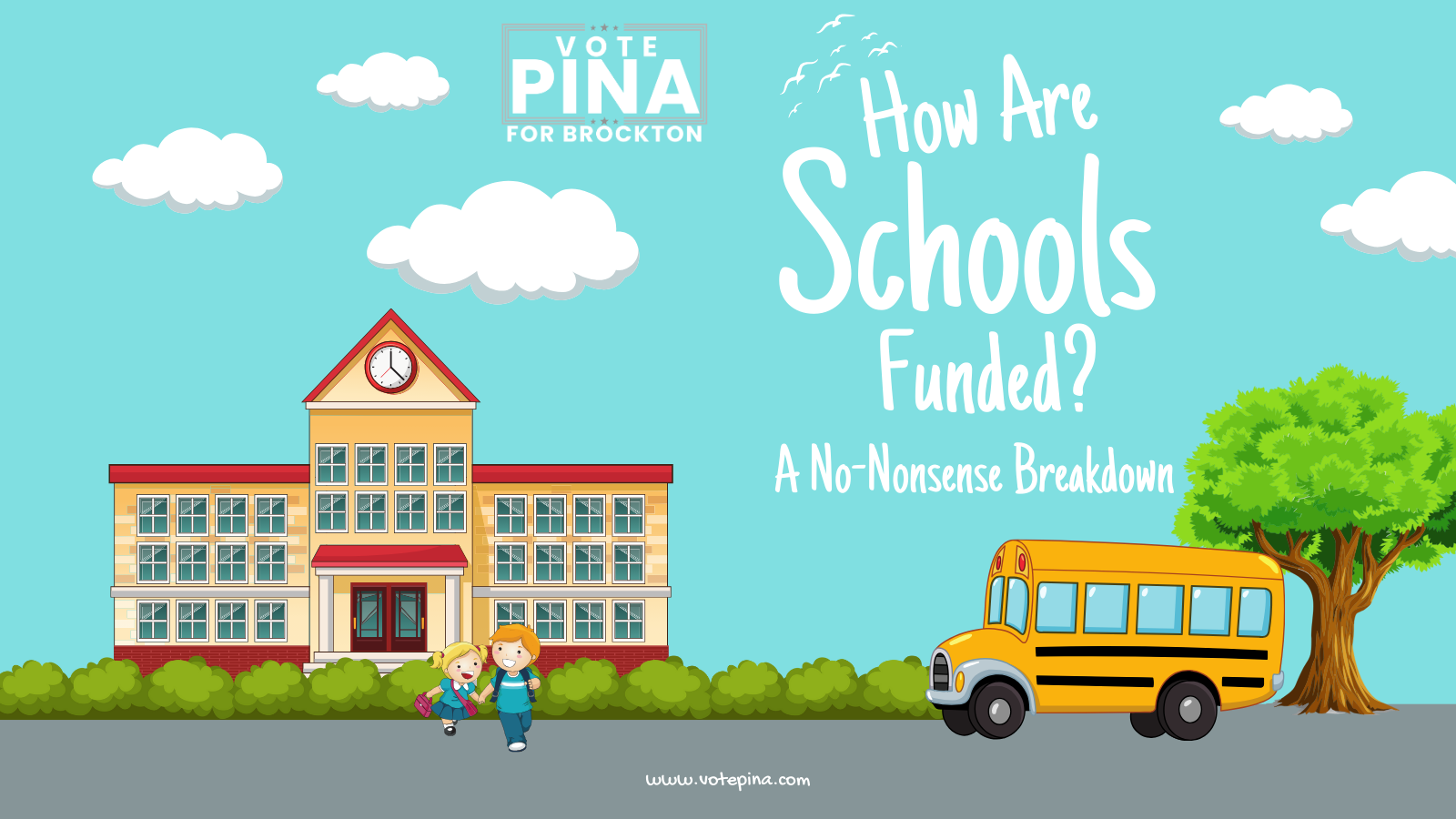The Basics: Where Your Kids’ School Dollars Come From
Every public school in Massachusetts is funded primarily through three buckets:
- Local Funding – money raised via property taxes by cities and towns.
- State Aid (Chapter 70) – state contributions to ensure adequacy and equity.
- Alternative State Programs – such as capital grants from the Massachusetts School Building Authority (MSBA) for facility projects; not used for operations.
Local funding is determined by each municipality’s ability to pay — based on property values and resident income — while the state fills in the rest to meet a calculated standard.
Chapter 70: The State’s School Funding Formula
Origins of Chapter 70
Chapter 70 stems from the 1993 Education Reform Act, which radically reshaped how Massachusetts funds K–12 schools. It established the foundation budget — the minimum amount needed per district to deliver an “adequate” education — and directed the state to step in where local contributions couldn’t meet that bar. Education Reform Now
The general rule: on average, the state covers roughly 41% of that foundation budget, while local communities fund the remaining 59% — though actual shares vary by district depending on wealth. Mass.gov
How It Works — Calculating the Foundation Budget
The foundation budget factors vary year by year and include:
- Enrollment counts, by grade level.
- Student needs, like special education, low income, and English learners.
- Geographic cost differences, such as local wages and inflation.
- Fixed costs, including health insurance and transportation. massbudget.org
From that, the formula determines how much should ideally come from local taxes. Whatever funding gap exists is filled by Chapter 70 state aid.
Historical Trends in Chapter 70 Aid (1993–2019)
Between FY2008 and FY2019, Chapter 70 aid increased from $3.73 billion to $4.91 billion, averaging nearly 2.9% annually. massbudget.org+15
During that period, the formula wasn’t fully reflective of real costs — especially for services and supports for students with higher needs.
2019 Reform: The Student Opportunity Act (SOA)
In 2019, Massachusetts took a major step forward with the Student Opportunity Act, which updated Chapter 70 to finally catch those cost realities:
- Significantly increased funding assumptions for health benefits, special education, English learners, and poverty-related services.
- Recalibrated district funding needs to better reflect actual educational costs. Massachusetts Taxpayers Foundation
This overhaul marked the biggest update to the formula since 1993 — a long-overdue recognition that our schools needed to match their budgets to real-world needs.
Looking at Today: Chapter 70 Funding Post-SOA
By FY2025, Chapter 70 aid climbed to $6.856 billion, fueled by fully phased-in implementation of the SOA. That’s the largest expenditure in the state budget for any program.Mass Teacher Association+5
By FY2026, Massachusetts is set to deliver $7.36 billion in Chapter 70 aid — a 6.7% increase over FY2025 — with every district receiving at least $150 more per student. Massachusetts DESE
This is a full 50% increase in just under a decade — a sign the state is finally stepping up.
The Inflation Oversight Problem
High inflation in recent years exposed a formula flaw. Although inflation soared — over 7% in FY2023 and 8% in FY2024 — Chapter 70 only rose by 4.5% per year, due to a cap — leaving districts shortchanged. Worse, losses didn’t carry forward; the formula froze aid at those lower levels. Mass Teacher Association
A bipartisan coalition is pushing a fix — one that keeps the cap but ensures “catch-up” payments, recouping underfunded inflation in future years. That would restore hundreds of millions to districts. Mass.gov+12Mass Teacher Association
Other Funding Supports — Not Operating Dollars
- The Massachusetts School Building Authority (MSBA) helps districts with capital needs — facilities, renovations, and new construction — by partially reimbursing projects between 31% and 80%, depending on local wealth. MSBA funding comes from a slice of the state sales tax.MSBA
These grants are vital, but not part of Chapter 70 and don’t influence classroom operations.
Putting It All Together — Summary of School Funding in MA Today
| Funding Source | Description | Primary Use |
|---|---|---|
| Local Taxes | Levied by municipalities based on wealth/income capacity | Required local contribution |
| Chapter 70 Aid | State funds bridging the gap to meet foundation budget | Operational funding |
| MSBA Grants | State grants for facilities construction/renovation | Capital improvements |
Historically, state aid covered about 41% of required funding, with local taxpayers bearing 59%. The SOA significantly increased state’s share since 2019, but inflation caps continue to bite unless fixed.
Why This Matters for Brockton Voters
- Equity of Opportunity
School funding isn’t equal — it’s based on need. Districts like Brockton, with more students who face challenges, now see higher per-pupil support thanks to SOA. That means more programs, staff, and supports where needed most. - Accountability for Funds
Transparency from the state is crucial. Voters need to see how much of the foundation budget is covered — and how much is coming from local taxes. Chapter 70 data is available in state databases going back to FY1993. Mass Teacher Association+12Massachusetts - Beware Inflation Trap
Without fixing that inflation carry-forward issue, districts lose ground every year — and voters are still paying for the gap. It’s irresponsible not to restore that lost funding. - Capital Must Match Operations
Schools need buildings and infrastructure in good repair, too. MSBA helps here, but it doesn’t replace the need for solid operating budgets. Voters must support both.
The Bottom Line for Voters
You deserve to know:
- How much your district needs to meet the real cost of education.
- How much comes from local property taxes versus state aid.
- Whether inflation and other formula quirks are shortchanging your students.
- That operating money (Chapter 70) and capital money (MSBA) are different buckets — both vital.
If elected, I will:
- Push for full transparency in funding breakdown — foundation level, local share, state share.
- Advocate for correcting the inflation shortfall once and for all — because classrooms shouldn’t operate on leftovers.
- Demand accountability on how both state and local dollars are spent — so real progress isn’t a buzzword, it’s built into budgets.


0 Comments